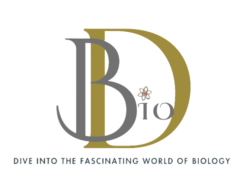I recently watched an animated movie- Migration. The premise of the story is about of group of mallard ducks trying to convince their overprotective father duck into migration. Despite being hesitant initially, they will have the best times of their lives when they migrate.
Setting the movie aside, migration, although enjoyable for the birds, is strenuous for them. They develop “migratory restlessness”. Let’s look at how birds overcome them.
Birds- the migration champions
Migration as a process shows how well the birds can physically and physiologically adapt to a change in seasons or the availability of resources. Migration is a very intense and energy-draining process, especially in birds. They have to remodel their entire physiological conditions store up to 50% of their weight of fats and increase muscle. It is a process that happens not just for birds but other animals too. But, birds are considered the migratory champions. As they approach their migration period, their body undergoes some changes. They start accumulating fats and begin to get more nocturnal. Fats are their main source of energy that will fuel their migratory journey. However, the molecular changes that result in these adaptive behaviors remain unknown. This brings us to the next section of the article…
Understanding adaptive behaviors at a molecular level
To understand this, a team of scientists led by Valeria Marasco exposed Common quails (Coturnix coturnix) to controlled changes in day length. They blocked it until they entered the non-migratory winter phase and collected RNA samples from the hypothalamus of these birds at a specific time during the night in both migratory and non-migratory phases. They subjected the RNA to differential gene expression and analyzed their functional pathways.
Key findings from the study
Migratory birds, which rely on fat as an energy source for long flights, have developed systems to efficiently transport and oxidize fatty acids. Two specific genes in the hypothalamus, appear linked to nocturnal migratory restlessness, suggesting a role in energy regulation during migration. The migratory state witnessed an upregulation of genes involved in fat trafficking, and protein and carbohydrate metabolism.
2 specific genes of interest include- apolipoprotein H or APOH, lysosomal associated membrane protein-2 or LAMP2- these genes overexpress at night. APOH positively correlated to nocturnal activity. Such relationships are interestingly not common in non-migratory birds.
This is a piece of novel evidence that correlates apolipoproteins (that regulate the transport of lipids) to nocturnal migratory movements.
Functions of APOH and LAMP2
APOH is typically involved in lipid and cholesterol transport in the brain
LAMP2 plays a role in managing fats inside cells. It helps transport cholesterol from the lysosome and break down fatty acids to be used in the form of energy.
Did males and females exhibit different migratory behaviors?
The study found differential gene expression between male and female migratory birds, with males showing more significant changes in migratory states. Key genes involved in fatty acid metabolism and energy homeostasis were identified, including networks related to insulin resistance, growth hormone, and glucocorticoid regulation.
Conclusion
To conclude, this study uncovers seasonal changes in the brain’s gene expression linked to migration in birds. It aligns with previous research by showing the up-regulation of genes involved in fat metabolism, but also introduces a novel finding: that neuronal pathways may play a key role in transporting lipids, activating fat breakdown, and supporting nocturnal migration. This hypothesis, previously overlooked, now calls for further investigation to understand the precise mechanisms involved.


Great read, thanks for sharing.